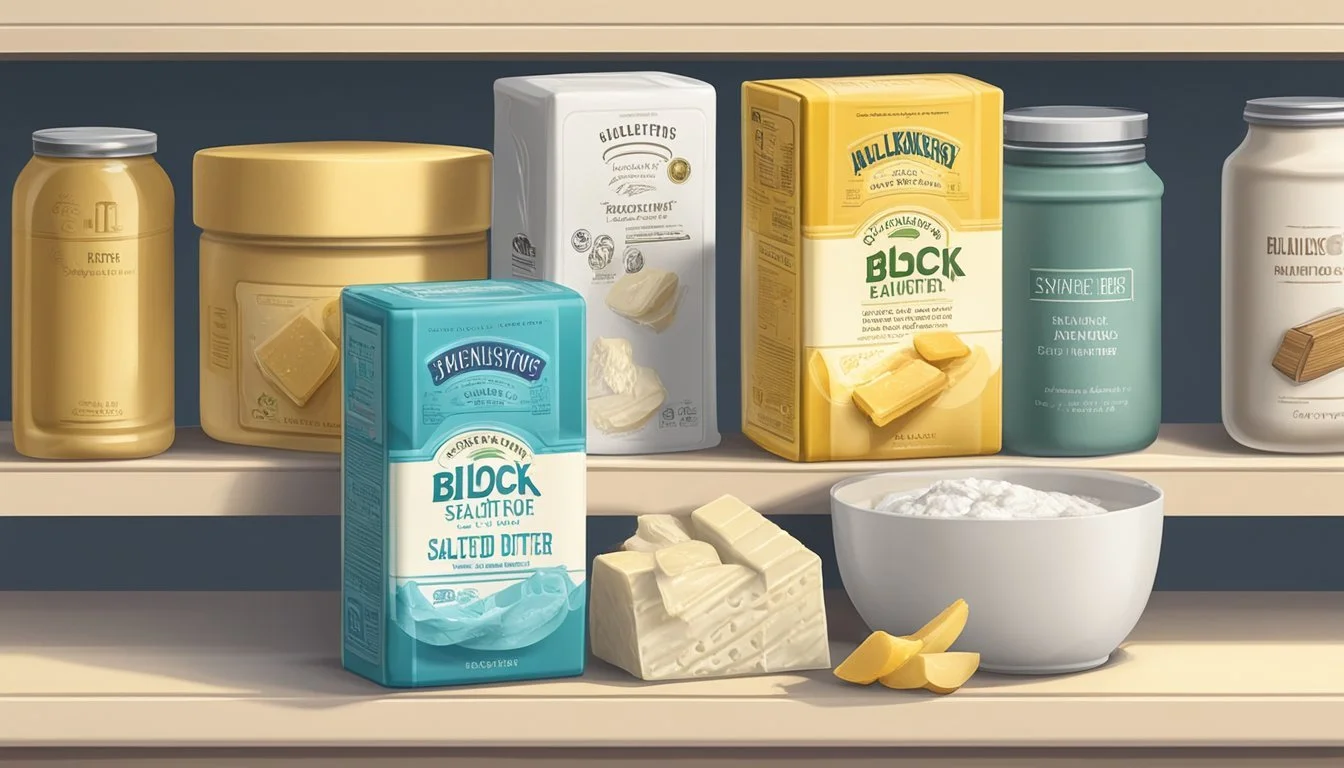How Long Does Salted Butter Last?
Shelf Life and Storage Tips
Salted butter is renowned for its ability to enhance the flavor of countless dishes and baked goods. Its shelf life is a point of interest for many, as it often lasts longer than its unsalted counterpart. The presence of salt in butter acts as a preservative, reducing moisture content and creating an environment less favorable for bacterial growth. This makes salted butter a staple pantry item with a robust shelf life, whether kept in the refrigerator or at room temperature for limited periods.
When stored properly in the refrigerator, salted butter typically remains fresh well beyond its printed expiration date. In a chilled environment, it can maintain its quality for several weeks to even a few months past its use-by date. This extended longevity allows consumers to purchase salted butter in bulk without concern for rapid spoilage, providing both convenience and economic benefits.
For those preferring the texture of room-temperature butter, it can be kept out on the counter to soften, which facilitates easy spreading. Although it is safer to leave salted butter at room temperature compared to unsalted varieties, it is still advised to use this practice sparingly. Butter should not stay out for extended periods due to potential quality degradation and increased chance of spoilage, especially in warmer environments.
What is Salted Butter?
Salted butter is a dairy product commonly used in cooking and as a spread, notable for its enhanced preservation qualities and savory flavor profile.
Composition and Benefits
Salted butter is made from pasteurized cream, derived from milk, and contains at least 80 percent milkfat. The remaining components are water and non-fat milk solids. Salted butter's distinguishing ingredient is salt, which adds flavor and acts as a preservative. This type of butter provides the creamy texture and rich taste that is favored in many culinary applications.
Salt as a Preservative
Salt serves as a natural preservative in salted butter due to its ability to inhibit bacterial growth. As a result, salted butter generally has a longer shelf life compared to its unsalted counterpart. The typical refrigerator shelf life of salted butter can extend up to five months, whereas unsalted butter may last for about three months. Salt concentration varies from brand to brand, influencing both taste and preservative effect.
Storing Salted Butter
Proper storage is essential to maintain the freshness and quality of salted butter. It can be stored effectively in the refrigerator or freezer, with special consideration to temperature and packaging.
Refrigeration Guidelines
When storing salted butter in the refrigerator, it should be kept at a consistent temperature between 32°F and 40°F. This ensures that the butter remains firm and fresh for use. It's advisable to store butter in the main compartment of the refrigerator rather than the door, where temperature fluctuations are more common. For optimal freshness, salted butter should be placed in an airtight container or wrapped in plastic wrap or aluminum foil to minimize exposure to air and prevent absorption of other food odors.
Temperature Range: 32°F - 40°F
Packaging: Airtight container, plastic wrap, or aluminum foil
Location: Main compartment of the fridge (not the door)
Freezing Techniques
For long-term storage, salted butter can be frozen where it retains quality for up to a year. Before freezing, the butter should be wrapped in aluminum foil or plastic wrap and then placed into an airtight container to prevent freezer burn and flavor transfer from other foods. To use frozen butter, transfer it to the refrigerator to thaw overnight before use.
Freezing Duration: Up to 1 year
Packaging for Freezing: Aluminum foil or plastic wrap, then an airtight container
Thawing Method: Transfer to refrigerator overnight before use
Shelf Life and Expiration
Understanding the shelf life and expiration of salted butter is essential for maintaining its quality and flavor. The preservation of salted butter varies depending on the storage conditions.
At Room Temperature
Salted butter can typically remain at room temperature for short periods. It's advisable to consume it within one to two weeks. The average room temperature should ideally be below 70°F (21°C) to minimize the risk of spoilage.
In the Refrigerator
When stored in the refrigerator, which should be at a consistent temperature of 32°F to 40°F (0°C to 4°C), salted butter has a considerably longer shelf life. It can remain fresh for up to three months beyond the printed expiration date.
Refrigerator Storage: Expect a shelf life of 3 months past expiration.
After Freezing and Thaw
Freezing can significantly extend salted butter's shelf life. Properly wrapped to prevent freezer burn, it can be stored in the freezer for up to one year.
Freezing: Lasts up to 1 year; optimal quality is maintained.
Thaw: Thaw overnight in the refrigerator for best results.
To ensure quality, once thawed, one should not refreeze butter and should use it within a month.
Recognizing Spoilage
Salted butter has a longer shelf life due to the preservative nature of salt, but it isn’t exempt from spoiling. The key to maintaining butter’s freshness involves understanding how to spot spoilage, which can prevent the health risks associated with consuming rancid dairy products.
Visual and Olfactory Indicators
Spoilage in salted butter can be detected through specific visual and olfactory signs. Indicators include:
Discoloration: Butter that develops darker patches or has a significant color change typically signals spoilage.
Mold Growth: Visible spots of mold, which could be of any color, indicate the presence of harmful bacteria and fungi.
Texture Change: If the texture becomes overly soft, mushy, or if there's excess liquid, the butter may be spoiling.
Odor: Fresh butter should smell clean and creamy. Any sour or rancid odor suggests the butter has gone bad.
Health Risks
Consuming spoiled butter can lead to foodborne illness. Important points to consider are:
Rancidity: Spoiled butter can contain oxidized fat, leading to an unpleasant taste and potential health risks.
Bacteria and Mold: These can produce toxins that may cause serious health effects if consumed.
Assessing these signs diligently ensures both the savor and safety of salted butter in one's diet.
Usage Tips
When using salted butter, one should consider the distinct roles it can play in both cooking and as a spread. Salted butter adds a savory flavor that enhances various dishes, and achieving the right texture is essential for maximum enjoyment.
Cooking and Baking
In cooking and baking, salted butter imparts a rich flavor to dishes. For optimal taste, one should ensure that the butter is fresh. Here is a quick reference:
Baking: Use butter that's at room temperature for a fluffier texture in cakes and biscuits.
Cooking: When making sauces or frying, add cold butter to control the temperature and prevent burning.
Spreading and Topping
Salted butter serves as a delightful spread and topping. To get the best spreadability and flavor:
Spread: Keep butter at room temperature for 30 to 60 minutes before use on toast or biscuits to achieve a spreadable consistency.
Topping: For toppings such as on pasta, one can add small chunks of fresh butter at the end of cooking to enhance the overall taste and creaminess.
Keep the butter's exposure to heat and light minimal to maintain its fresh taste.






